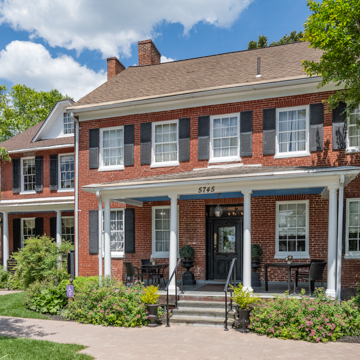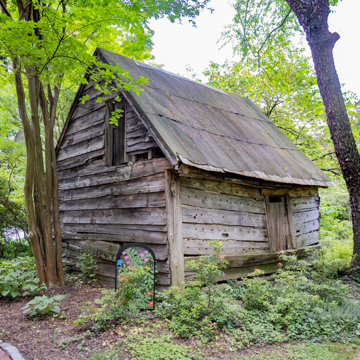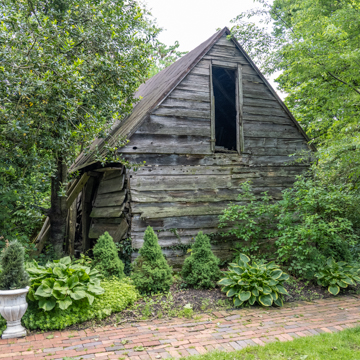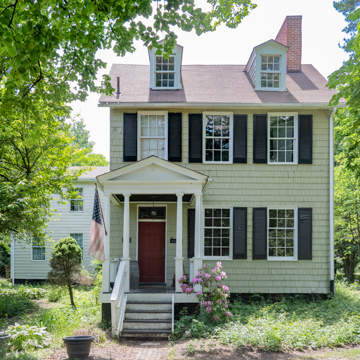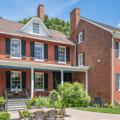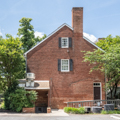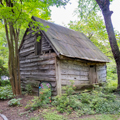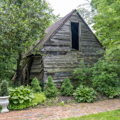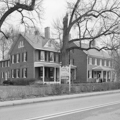Six buildings remain of the once bustling Elkridge Furnace iron-making endeavor, which originated in the mid-eighteenth century. The discovery of iron ore in the Patapsco River Valley made ironmaking one of the first industries in the area, with furnaces using water from the Patapsco to cool their bellows and run machinery. Colonial-era iron production diversified the economy of the struggling tobacco port of Elkridge Landing while still utilizing the enslaved labor and small-scale settlement patterns of the region. This operation was founded c. 1755 by Caleb Dorsey Jr., who also operated Dorsey’s Forge farther north along the Patapsco. Around 1815, Elkridge Furnace was acquired by the entrepreneurial Ellicott family after changing hands many times in the preceding decades. They expanded the capacity, with Elkridge Furnace producing sixteen thousand tons of pig iron in 1826.
Most of the remaining structures likely were built in the 1830s by the Ellicotts. These include a c. 1835 two-and-a-half-story, side passage owner’s house, which boasts fine brickwork and refined details inside and out reflecting the transition from Federal to Greek Revival. The two-story kitchen wing to the rear appears to be part of the original construction.
Abutting the owner’s house to the east lies the company store and dormitory. The primary elevation was originally that facing the Patapsco River rather than the one oriented to the street. Likely built during the second quarter of the nineteenth century, the company store is the most intact example of a building erected for this purpose in the state. Even more remarkable are two small, one-story dovetail plank outbuildings that sit west of the owner’s house on stone foundations. Possibly used as housing for either free or enslaved furnace workers, these structures represent rare survivors of a once common but ephemeral form of construction.
A wood manager’s house (c. 1835) sits directly across the street at 5730 Furnace Avenue. While smaller and plainer in finish than the owner’s house, the decorative details reflect a shared building period and stylistic approach. Also nearby at 5735 Race Road is a recently restored two-story brick semidetached house built for furnace workers in the mid-nineteenth century.
The furnace continued to change hands frequently; it was sold to its final owner, the Great Falls Iron Company, in 1858. At this time the complex included a dozen more buildings along Furnace Avenue, likely worker housing. The Patapsco River flooded in 1868 and again in 1873, destroying the furnace and ending iron production at this site. Robert H. Brown acquired the property in 1887 and was probably responsible for the late-nineteenth-century alterations to the owner’s house. Today, that house, the store, and the semidetached workers’ house have been restored under a lease agreement with the State of Maryland for use as the Elkridge Furnace Inn restaurant and event venue.















